-
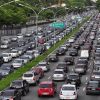 +15 +1
+15 +1The evidence that the world has passed 'peak car'
Cars aren’t what they used to be. Sure, they have more horsepower, more features, and require less fuel — but they are losing their power over humanity. At least that’s the argument in a new book on the history of transportation by journalist Tom Standage, deputy editor of The Economist. In A Brief History of Motion: From the Wheel, to the Car, to What Comes Next, Standage argues the world may have already passed what he calls “peak car” — the point at which car ownership and use level off and start to decline.
-
 +8 +1
+8 +1'We’re happier, calmer': why young adults are moving out of big cities
Gaby Morse, 28, and her partner, Doug Marshall, 30, had been living the dream in London: relishing the creative chaos and thriving on the social life of the capital – and barely noticing that they could only afford to live in separate, tiny flats.
-
 +13 +1
+13 +1Why keeping one mature street tree is far better for humans and nature than planting lots of new ones
Thanks to Victorian street planners, many British streets were designed to be full of big trees and, with 84% of the population living in urban areas, most people are more likely to encounter trees in the streets than they are in forests. The UK is one of the least densely wooded countries in Europe (at 13% coverage compared to the EU average of 38%) and, as such, its street trees are even more valuable.
-
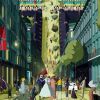 +20 +1
+20 +1Oslo got pedestrian and cyclist deaths down to zero. Here’s how
In 2019, Oslo, Norway recorded zero pedestrian or cyclist deaths. There was only a single traffic fatality, which involved someone driving into a fence. (For comparison, preliminary figures in London show 73 pedestrian and six cyclist fatalities in 2019; New York recorded 218 total traffic fatalities, including 121 pedestrian and 28 cyclist deaths.)
-
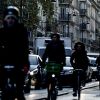 +2 +1
+2 +1It’s Time for the ‘15-Minute City’
In her re-election campaign, Mayor Anne Hidalgo says that every Paris resident should be able to meet their essential needs within a short walk or bike ride.
-
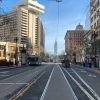 +17 +1
+17 +1The Spine of San Francisco Is Now Car-Free
The plan to ban private cars from Market Street—one of the city’s busiest and most dangerous downtown thoroughfares—enjoys a remarkable level of local support.
-
 +28 +1
+28 +1Mathematicians have solved traffic jams, and they’re begging cities to listen
Mathematicians are unimpressed by engineers’ solutions.
-
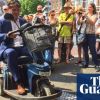 +21 +1
+21 +1‘People aren’t disabled, their city is’: inside Europe’s most accessible city
From flattened cobbles to threshold ramps, the Dutch city of Breda has much to teach its neighbours
-
 +29 +1
+29 +1A better use for sprawling, big-box store parking lots? Urban farms
This conceptual design reimagines the parking lot as something more productive.
-
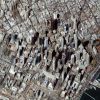 +28 +1
+28 +1The world’s downtowns are slowly giving up on personal cars
Increasingly, the world's biggest cities want the main drag to be for anything but driving.
-
 +17 +1
+17 +1What makes a city great? A new way to look at urban data will give us clues.
Urban planning is more art than science. But data mining and visualization on a massive scale are set to change that.
-
 +16 +1
+16 +1Collision course: why are cars killing more and more pedestrians?
The long read: For drivers, roads are safer than ever – but for people on foot, they are getting deadlier. Car companies and Silicon Valley claim that they have the solution. But is that too good to be true?
-
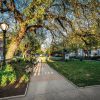 +3 +1
+3 +1Urban forests are dying. Baltimore shows us how to bring them back.
Walk through Baltimore’s neighborhoods, and look up. The fan-shaped ginkgo leaves and ruby-red pearls dangling from cherry branches are the literal fruits of how Gene DeSantis has spent the predominant part of his life. On Saturdays, the slight, cap-wearing 57-year-old plants trees. By his count, 15,223 of them over the past 40 years.
-
 +24 +1
+24 +1Opinion | Keep Your Augmented Reality. Give Me a Secret Garden.
My friends and I found hidden spaces where we could be teenagers again. We must be allowed to keep them.
-
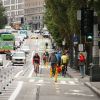 +20 +1
+20 +1Separated Bike Lanes Means Safer Streets, Study Says
Cities that build protected lanes for cyclists end up with safer roads for people on bikes and people in cars and on foot, a new study of 12 large metropolises revealed Wednesday.
-
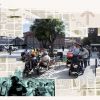 +25 +1
+25 +1Barcelona’s radical plan to take back streets from cars
Introducing "superblocks."
-
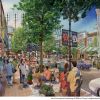 +4 +1
+4 +1District Detroit: Inside the Ilitches' land of unfulfilled promises
Despite promises that the area would be transformed by 2017, more than a dozen of its 50 blocks are now more vacant than before
-
 +39 +1
+39 +1Urban trees 'live fast, die young' compared to those in rural forests
Urban trees grow more quickly but die faster than rural trees, resulting in a net loss of street-tree carbon storage over time, according to a study published May 8 in the open-access journal PLOS ONE by Ian Smith of Boston University, US and colleagues. The findings suggest that planting initiatives alone may not be sufficient to maintain or enhance canopy cover and biomass due to the unique demographics of urban ecosystems.
-
 +2 +1
+2 +1Sterling Higa: I Don't Need A Car Anymore, And I'm Not The Only One
I donated my car to charity three years ago and haven’t looked back. I live a few blocks from downtown Honolulu, and I commute by walking. When it’s time for class at the University of Hawaii, I take the No. 4 bus to Manoa. When I want to visit a coffee shop in Kakaako, I ride my bicycle. If I am in a hurry or need to make a longer journey, I take an Uber.
-
 +28 +1
+28 +1From video game to day job: How ‘SimCity’ inspired a generation of city planners
SimCity just turned 30. It has introduced millions of players to the joys and frustrations of zoning, street grids and infrastructure funding. For a generation of pros who build the places where we live, it was their first taste of planning as a career.
Submit a link
Start a discussion




















